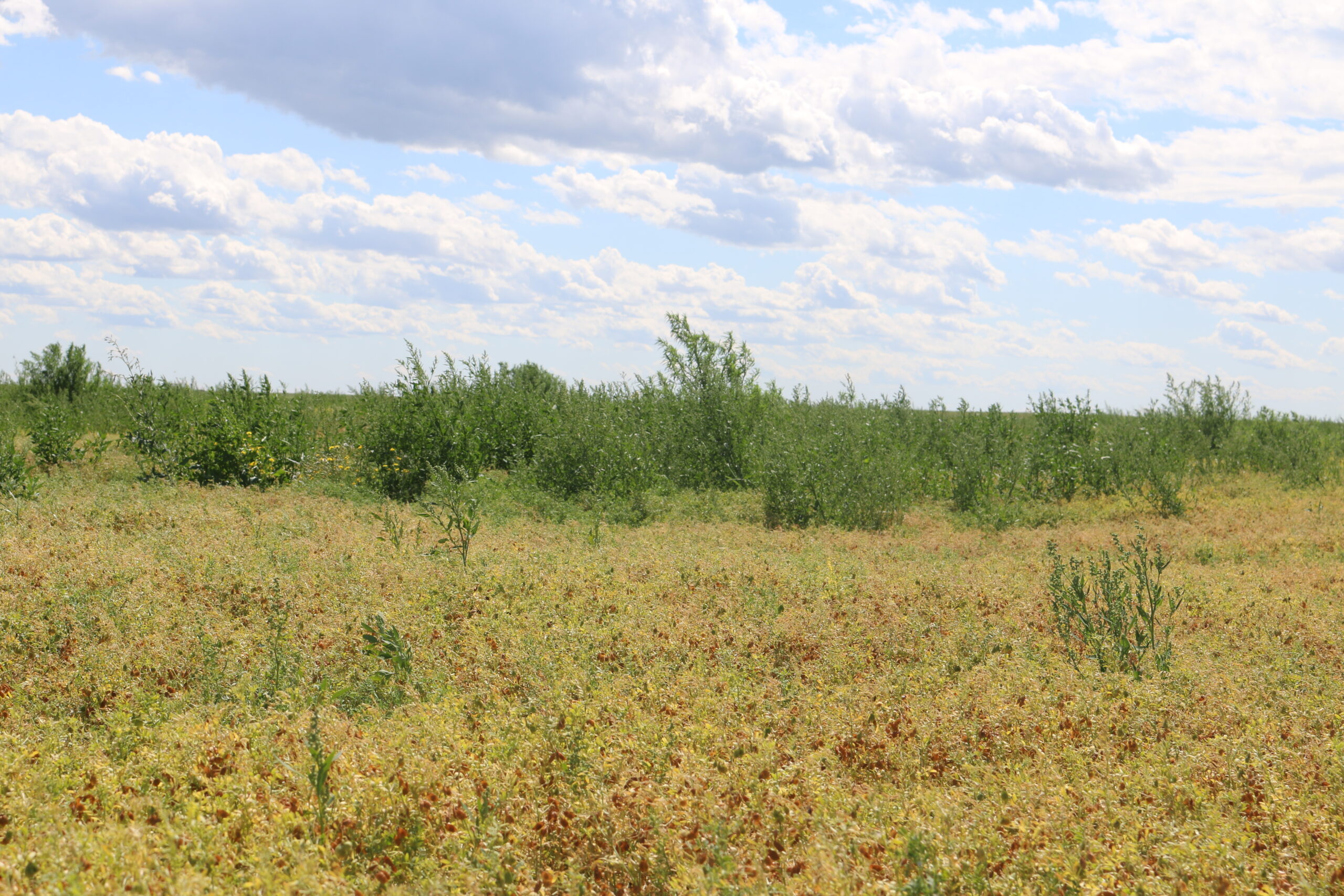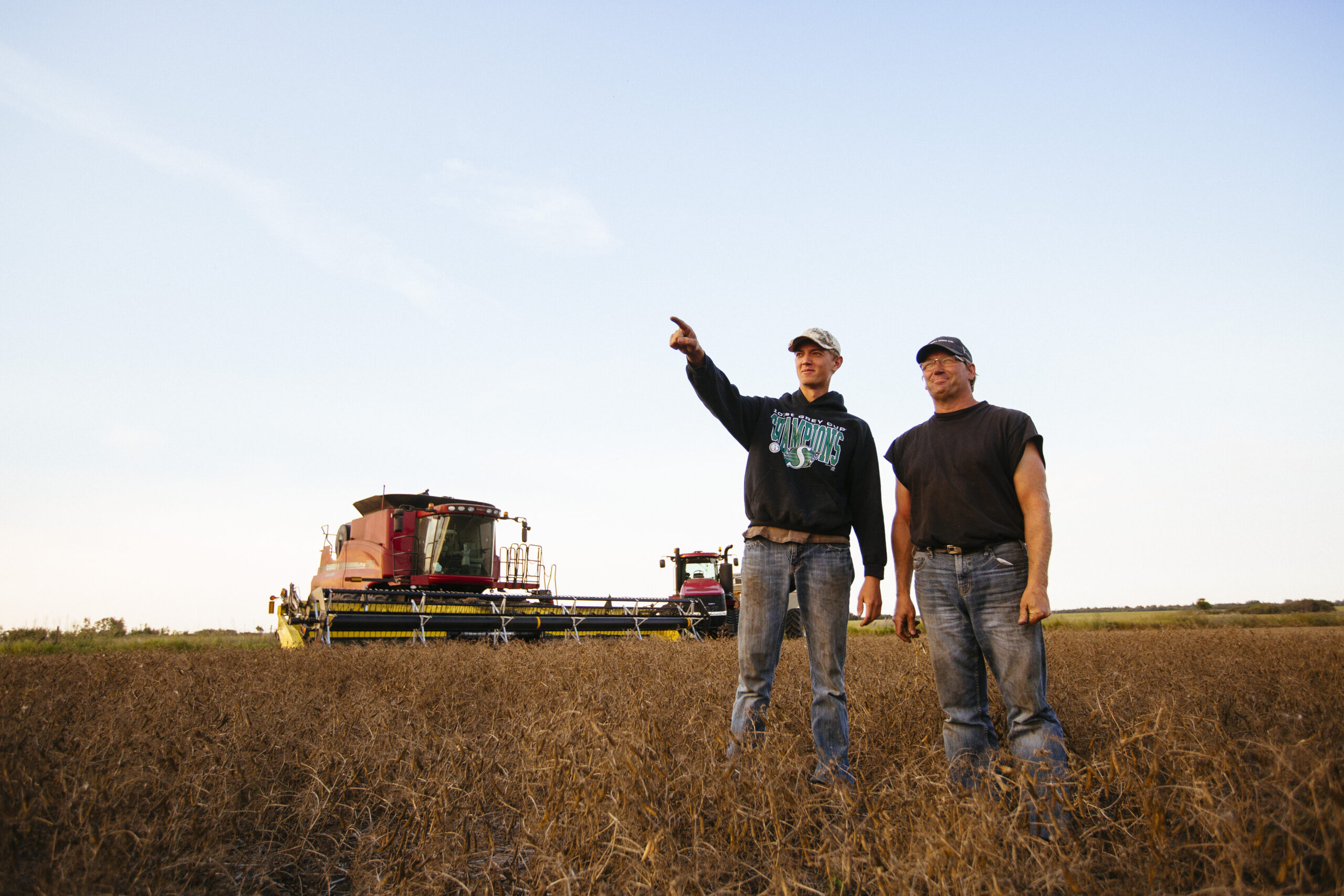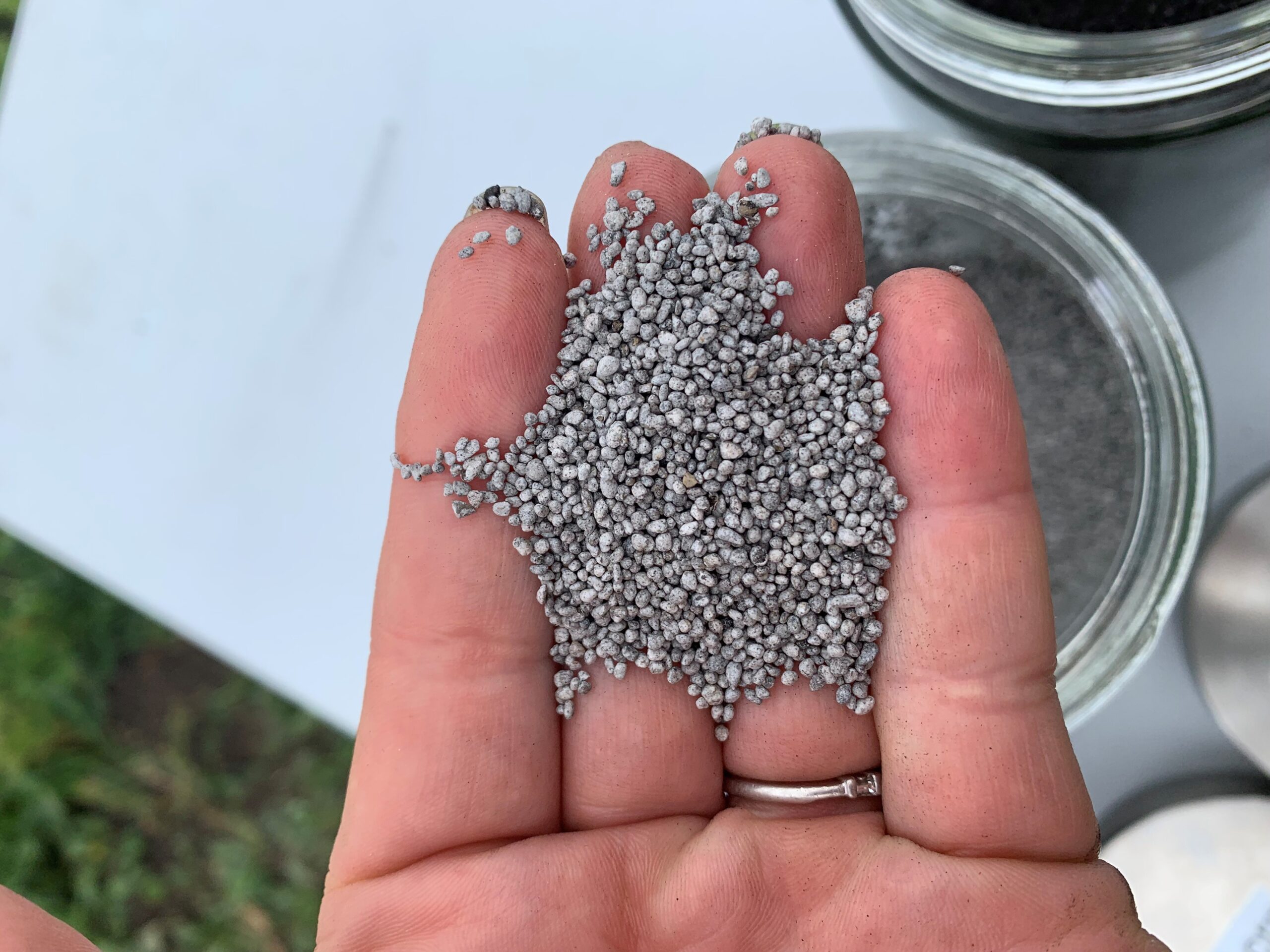Adapted from an original article by Bruce Barker, P.Ag.
Weed control in pulses is an important step to maximizing yield and profitability, since many pulse crops are poor competitors with weeds. Controlling weeds early is generally accepted as a good management strategy.
Researchers look at the critical period of weed control (CPWC) as an important part of integrated weed management. This is defined as the growth stages in the crop that must be kept weed free to prevent yield loss. The critical period is based on yield loss due to weed interference of no more than 5%. In other words, the crop has to be weed-free during these stages to prevent a yield loss of more than 5%.
Peas

Several research studies on time of weed removal have been conducted on peas. Research conducted at Agriculture and Agri-Food Canada (AAFC), at Lethbridge and Lacombe, found that the beginning of the CPWC was usually up to one or two weeks after pea emergence. Annual weeds were removed from pea crops at intervals of one, two, three, and four weeks after crop emergence. Pea yields declined by 0% after one week, 7% after two weeks, 12% after three weeks, and 26% after four weeks. Similar results were found at Agri- ARM sites in Saskatchewan.
Research in northeast Alberta and the Peace River region showed pea yields were higher and more consistent with spraying at the second node stage compared to the eighth node stage. Yield was increased (22 to 125%) seven times out of 10 with early applications.
Lentils
Research at the University of Saskatchewan (U of S) found that lentils have a CPWC beginning at the five-node stage and continuing to the 10-node stage. The researchers stated that this is the period when weeds begin to start to accumulate significant growth and ends with lentil canopy closure. They concluded growers should consider using a post-emergent residual herbicide that can control weeds during the CPWC.
Subsequent research at the U of S on Clearfield® lentils found that an application of IMI-herbicides at the six-node stage resulted in 30% higher yield than the two-node stage. Based on these results, an IMI- herbicide application on Clearfield® lentils was recommended at the five-to six-node stage.
Research completed at AAFC – Scott found that post-emergent harrowing with a tine harrow can be used to control weed seedlings when the crop is very short (less than 10 centimetres or four inches), provided that the foliage is dry and the operation is done on a warm, sunny day.
Faba Beans
Faba beans are poor competitors with weeds, especially during the seedling stage. In research plots in Alberta, yield was reduced by as much as 85% when wild oat levels were high. The CPWC in faba bean is currently under investigation by the University of Saskatchewan Weed Program. Preliminary results suggest a fairly wide CPWC of 5-node to early flowering based on two locations over two years. This work is continuing in 2021 to confirm the preliminary results.
Saskatchewan Pulse Growers recommends applying post-emergent herbicides at the earliest crop stage listed on the herbicide label. For Basagran®, this would be 10 cm (4 in) in height, Odyssey® NXT at the one to six node stage. Poast® Ultra and quizalofop (Assure® II, Yuma® GL and Contender®) do not list a leaf stage restriction. To maximize yield potential, spray once most grassy weeds have germinated. Spraying early will also minimize crop damage. Crop injury due to late herbicide application is a common problem.
Other weed control strategies include the use of Edge™ pre-emergent application in the fall, or a pre-plant or pre-emerge application of Authority® herbicide.
Chickpeas
Chickpeas are not a competitive crop, especially when weed competition occurs early. Yield loss has been reported as high as 81 to 97%. If weeds have emerged, apply herbicides at early crop stages. This will improve weed control and reduce competition from the weeds, and usually reduce herbicide injury.
Post-emergent harrowing is not recommended for weed control as it can spread disease and cause severe crop injury.
Soybeans
Research is only starting on many aspects of soybean production. Many recommendations come from Manitoba or Ontario. In soybeans, the CPWC is generally recognized as lasting from emergence to the second or third trifoliate leaf stages (V2-V3), but can last well into the reproductive stages. This critical period was established at the University of Guelph, and is generally recognized as appropriate for Manitoba and Saskatchewan.
Ontario Ministry of Agriculture indicates that yield loss caused by weeds can be reduced to less than 5% by maintaining good weed control during the critical period. Later-germinating weeds have a minimal impact on yield and have relatively low weed seed production.
Dry Beans
Field beans are not competitive and severe yield losses will occur, even from low weed pressure. Research in Minnesota found that the CPWCd was 20 to 42 days after planting – indicating that weed control should begin no later than 20 days after planting and continue until 42 after planting.
In-crop herbicides for annual weed control in beans are limited, and effective herbicides for perennial weed control are not available. Ensure that any fields to be planted to beans are free of perennial weeds.
When beans are planted in wide row spacing, tillage can be used between the rows for weed control. Manitoba Agriculture recommends tillage during warm days when the beans are slightly wilted, as the crop will be less susceptible to breakage and the weeds will wilt and die quickly. Do not till when the foliage is wet, as diseases can be easily spread under these conditions.
Integrated Weed Management
With the on-going challenges of herbicide resistance, research is being conducted on an integrated weed management approaches that uses both herbicidal and non-herbicidal weed control methods. Research at the U of S is looking at using mechanical approaches such as rotary hoeing, inter-row cultivation, weed wiping, crop topping, weed seedhead clipping, and the Harrington Seed Destructor.
A U of S weed wiping study found that using a weed-wick to wipe wild mustard plants growing above a lentil stand with either 2,4-D or glyphosate controlled 80% of wild mustard plants and almost eliminated wild mustard seed production. This can be a strategy for controlling Group 2 resistant mustard in lentil crops.
Another research trial led by researcher Steve Shirtliffe at the U of S compared integrated mechanical and herbicide control methods and the impact on lentil yield and net profit. The treatment using only mechanical weed control with the rotary hoe, and the highest seeding rate, yielded as much as the full herbicide treatment at the recommended seeding rate. Rotary hoeing was conducted when weeds were just emerging (prior to leaf development).
Layering of herbicides is also a practice that is being recommended by weed specialists as another way of utilizing multiple modes of action to help slow the development of herbicide resistance. Layering uses a pre-emergent herbicide followed up with a different post-emergent herbicide Group. For example, research at Rosthern in 2014 found the combinations listed provided acceptable control of Group 2 resistant cleavers in pea:
- Fall Edge™ (ethalfluralin; Group 3) followed by spring pre-emerge Authority® (sulfentrazone; Group 14)
- Fall Edge™ followed by spring post-emerge Viper®(imazamox + bentazon; Group 2+6)
- Spring pre-seed Heat® (saflufenacil; Group 14) followed by post- emerge Viper®
- Spring pre-emerge Authority® followed by post-emerge Viper®
- Spring pre-emerge Command® (clomazone; Group 13) followed by post-emerge Viper®

Source: Eric Johnson, University of Saskatchewan



